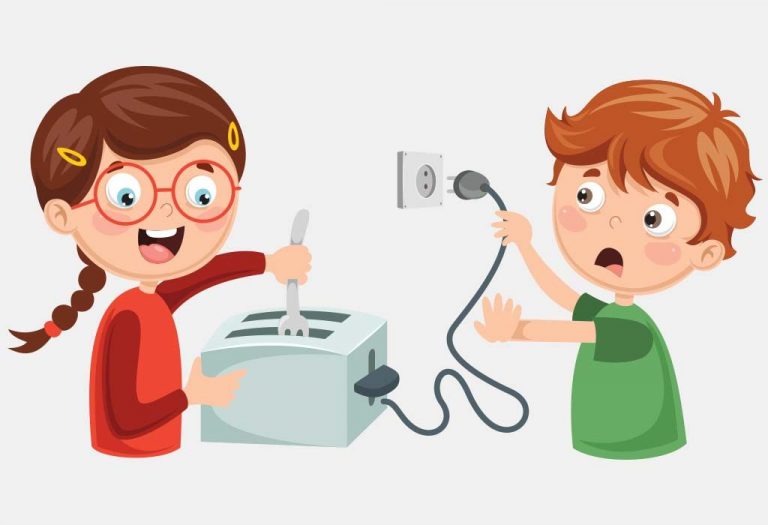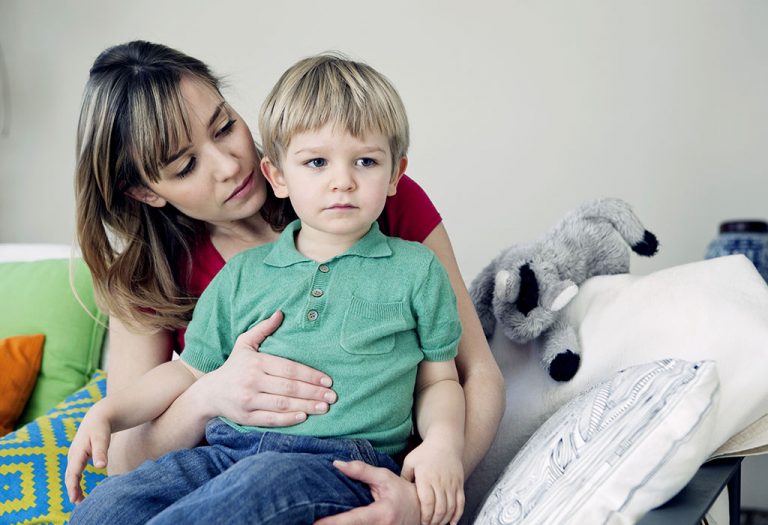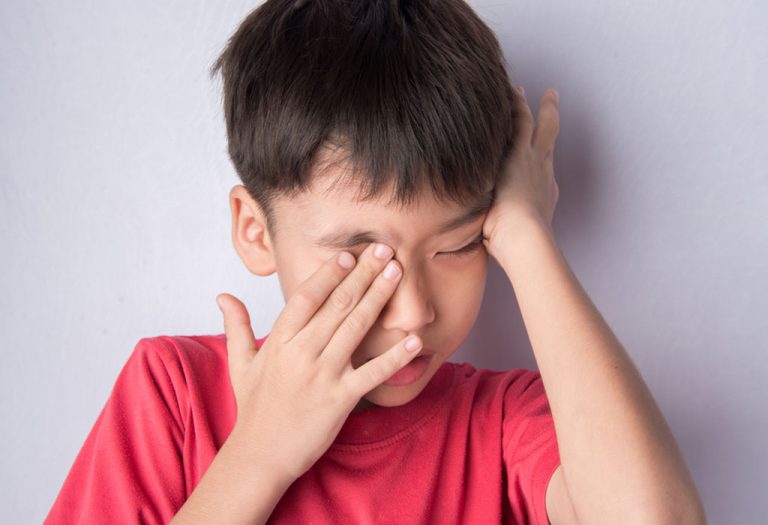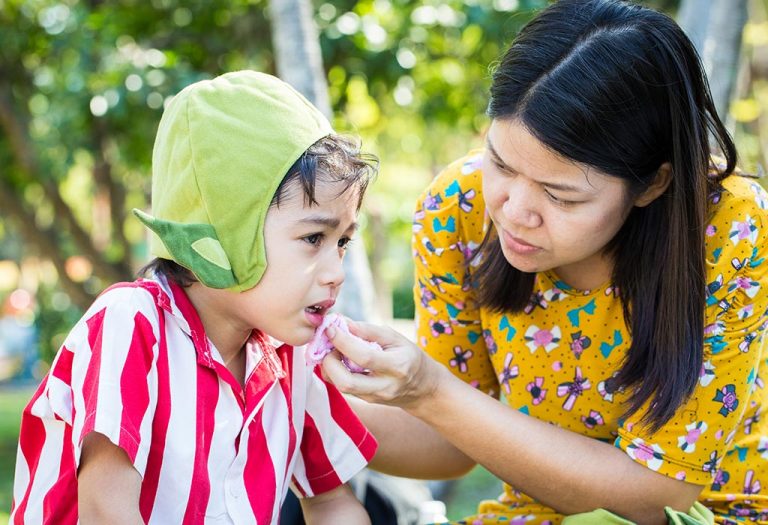Electrical Safety for Kids – Keep Your Child Away from Shocks
Children’s curiosity is similar to a cat’s, but it can prove dangerous when it comes to electricity. From overheating gadgets to open switchboards that tempt kids to literally put in their fingers (don’t know what excites millions of children to do the same!), there lurk several electrical dangers that you need to protect them from. Since we can’t stop children from exploring their surroundings, we can, at least, baby-proof them so they stay away from hazards. Electrical safety for kids is as important as teaching them daily moral values. Teaching children about electricity and electrical power can keep them away from harm. In this article, we cover in depth how to keep your precious little one away from electrical hazards and allow them to be their creative best.
Dangers of Electricity for Children
Some of you might have come across a situation where you feel a shock when you touch the doorknob or another person. What you experienced was shock from static electricity. An actual electric shock is very painful and can even result in death.
- Electricity can cause severe burn injuries, fatal shocks and even death.
- The muscles in the body get tightened up, causing choking and making it difficult for the child to breathe.
- It disrupts the heartbeat, which in turn constricts the blood vessels.
- Electricity if not handled properly has the potential to cause severe internal damage many hours later after experiencing the shock.
All these seem scary, but they can be avoided with a little bit of knowledge and care.
Electricity Safety Tips for Kids
Human beings are a good conductor of electricity which is why electricity flows easily through our body. Our body is made up of 70% water and electricity is known to move quickly through the water. One more fact to remember is that electricity will always try to find the easiest path to the earth or ground. Look at the points below to keep your child safe.
At Home Safety
The home is the place where curiosity is at its peak for the children. Learn more about the electricity safety rules for kids when they are at home (1).
- Never let them stick their fingers or any other object into the electrical outlets or allow them to light bulbs.
- Baby-proof small appliances like toasters, even if they are not in use and switched off.
- You should never use any electrical appliance near the sink, bathtub or any other sources of water.
- Keep electrical cords away from sinks, bathtub or any other sources of water. Apart from causing shock they are a choking hazard for your child.
- You should always dry your hands before you touch any electrical appliance or device, such as a light switch or toaster hair dryer.
- Do not pull out the electrical plug out of the socket by pulling away its cord.
- Keep your electrical appliances switched off and unplugged when you are cleaning an electrical appliance or when they are not in use.
- Replace worn, torn or damaged cords immediately to prevent getting shocks.
Outdoor Safety
Outdoors are the best place for children to set on their exploration missions. Keep those busy hands safe from electrical shocks (2) (3).
- Climbing trees are fine as long as they are not near power lines or they have power lines running above them. If your children love flying kites, make sure they are pretty much away from the power lines. In case the strings get entangled, the electricity from the power lines can run through the strings causing burn injuries or shocks.
- Swimming should be avoided during electrical storms. Do not touch any electrical appliance if you are wet or in the swimming pool or standing in the puddle.
- Do not remove anything entangled on the power line, instead call for help from the electrical board office.
- Never touch wires that have broken and are lying on the ground. Maintain a safe distance from such live wires to prevent getting electrocuted.
- Avoid going near electric substations and do not climb over the fence that surround the substations.
- Do not throw objects like shoes or sneakers, or any other material on the electric power lines.
- Do not hang any banners or signages on electric utility powerlines or poles. Never climb any utility pole or tower.
- If you see anyone getting an electric shock, call for help immediately. Do not touch the person.
Other Electrical Safety Tips for Children
It only takes a small mistake to start an electric fire, but with these simple prevention tips, you can find effective solutions to this problem.
- Keep clothes and other combustible items away from big electrical appliances.
- Keep the power chords in good health. Replace them immediately if you notice any wear and tear.
- If your child is playing with any electrical toy ensure that he is atleast 10 feet away from wet surface or water.
- Never fly remote controlled airplanes or helicopters near overhead power grids or lines. Play with them only in the open spaces such as fields or parks.
How to Teach Kids About Electric Safety?
Your little explorer is ever too busy, so it is really not too early to teach them about electrical safety.
- Set aside a family meeting time to start the discussion.
- Use of activity sheets or books is a nice way to get them interested in the topic of electrical safety and help them learn about it. You can teach them using interactive videos as well.
- To give them a hands-on lesson, buy an inexpensive chord and cut it into pieces to demonstrate what is inside the chord to build up their curiosity. Gradually you can let them know what is electricity and a circuit breaker.
- Show them how the sockets are covered with plastic plugs for electrical plug safety.
- Once you feel confident that they have learnt about the safe use of electricity, assess them by asking questions.
- Use positive reinforcements to demonstrate the positive learning takeaway from the project.
First Aid for Electric Shock in Kids
In the unlikely event of experiencing an electric shock, follow the below-mentioned steps till help arrives, as mentioned by the American Academy of Pediatrics (4):
- If possible, turn off the source of power; otherwise, remove it using a piece of cardboard, wood, or plastic.
- Move the child as little as you can, as an electric shock might have caused a spinal fracture.
- Begin CPR if you do not see any movement or feel any heartbeat in the child.
- Meanwhile, get medical help by calling the emergency helpline number 911, your child’s paediatrician, or your local emergency number right away.
- Try to prevent the child from becoming chilled.
- Apply a bandage to cover any burned areas.
FAQs
1. How to child-proof your home to prevent electrical hazards?
To ensure electrical safety for children, here are some baby-proofing techniques:
- Secure unused wall outlets. Plastic inserts for wall outlets can be inserted, but they can also be pulled out easily by kids. Look for non-choking safety outlets or plug covers that prevent foreign objects from being inserted or pulled out easily (5).
- Block the outlets by creatively placing furniture in front of them.
- Keep extension cords away from children’s reach, either using a hide-a-cord device or behind furniture.
- Put bathroom and kitchen electrical appliances out of children’s reach in a cabinet with a safety lock (6).
- Put electrical appliances like a DVD player out of children’s sight and reach.
2. How can damaged electrical cords harm a person?
Ungrounded or damaged cords can cause severe electrical hazards to anyone who uses them, as it could cause electrical shock and fire (7).
3. What can children do to help if they witness somebody being electrocuted?
If a child witnesses electrocution, they should be taught never to touch the person, the object that is causing the shock, or any nearby wires. They must stay away from the scene and call for help either by contacting locals or by dialling the emergency services number (8).
Remember to always use electric socket covers for child safety and child-safe electrical outlets when you have little children at home.
References/Resources:
1. Inside the Home; Energy Safe Kids; https://energysafekids.org/electric/students/be-safe-around-electricity/inside-my-home/#
2. Talk to Children about Electrical Safety; SafeElectricity.org; https://safeelectricity.org/public-education/tips/talk-children-electrical-safety/
3. 10 Electrical Safety Tips for Kids; San Patricio Electric Cooperative, Inc.; https://www.sanpatricioelectric.org/10-electrical-safety-tips-kids
4. Electric Shock Injuries in Children; American Academy of Pediatrics; https://www.healthychildren.org/English/health-issues/injuries-emergencies/Pages/Electric-Shock.aspx
5. Home Safety: Tips for Families With Young Children; American Academy of Pediatrics; https://www.healthychildren.org/English/safety-prevention/at-home/Pages/home-safety-heres-how.aspx
6. 5 Bathroom Safety Tips for Infants & Young Children; American Academy of Pediatrics; https://www.healthychildren.org/English/safety-prevention/at-home/Pages/Bathroom-Safety.aspx
7. Damaged Power Cords; Office of Congressional Workplace Rights; https://www.ocwr.gov/publications/fast-facts/damaged-power-cords-know-your-electrical-supply-cord/
8. Electric shock – low voltage current; St John Ambulance; https://www.sja.org.uk/get-advice/first-aid-advice/minor-illnesses-and-injuries/low-voltage-electrocution/
Also Read:
Fire Safety Tips for Kids
Internet Safety Tips for Kids
School Safety Rules for Children
Important Beach Safety Tips for Kids
Essential Safety Rules for Kids At Home
Important Road Safety Rules to Teach Your Children
Was This Article Helpful?
Parenting is a huge responsibility, for you as a caregiver, but also for us as a parenting content platform. We understand that and take our responsibility of creating credible content seriously. FirstCry Parenting articles are written and published only after extensive research using factually sound references to deliver quality content that is accurate, validated by experts, and completely reliable. To understand how we go about creating content that is credible, read our editorial policy here.






















